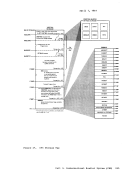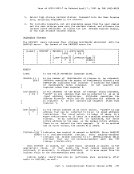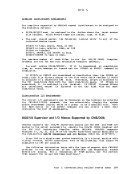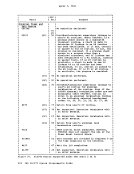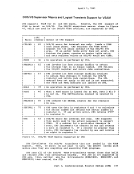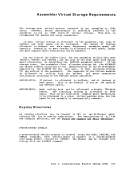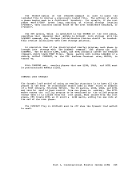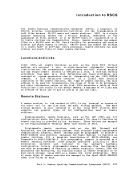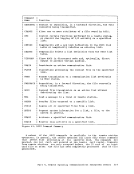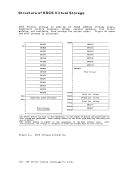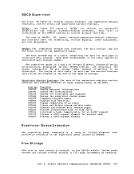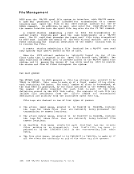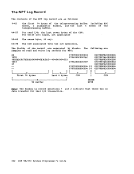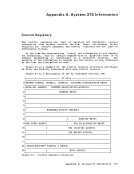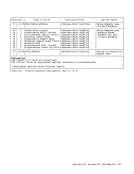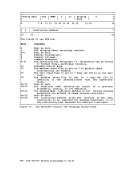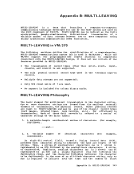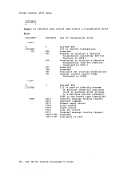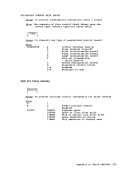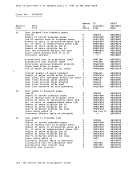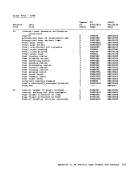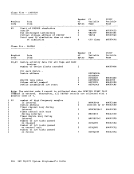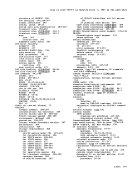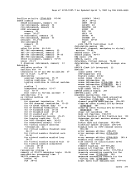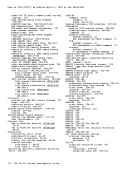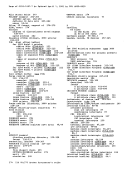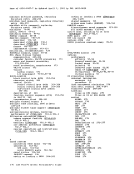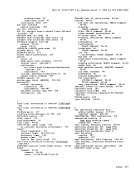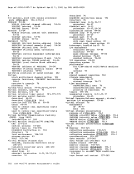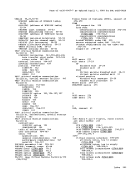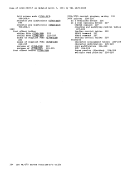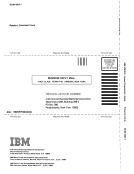April 1, 1981
Descriptions of VMCF Subfunctions
There are twotypes of VMCF subfunctions: data transfer and control.
THECONTROL SUBFUNCTIONS The VMCF control subfunctions allow efficient management
transfer operations from your virtual machine console. The
subfunctions are:AUTHORIZE, UNAUTHORIZE, CANCEL, QUIESCE, IDENTIFY, and REJECT.
of data
controlRESUME, AUTHORIZE enables VMCF for a virtual machine; once AUTHORIZE has been
executed, the virtual machine can execute otherVMCF subfunctions and
receive messaqes and data from other authorizedVMCF virtual machines.
It is possible to specify three options with theAUTHORIZE subfunction: SPECIFIC, PRIORITY, and VMCPSMSG. The SPECIFIC option authorizes communication with a specific virtual
specified virtual machine will be rejected. TheSPECIFIC option can be
used in an application where virtual machines desire to communicate with
amaster controller but not among themselves. Under the
facility,CP is authorized with every virtual machine that is to receive
messages sent via theSMSG command. Virtual machines that are to
receive messages must authorize themselves.
ThePRIORITY option allows a virtual machine to authorize the receipt
ofpriority messaqes. A virtual machine is allowed to send priority
messages to another virtual machine only if the other virtual machine is
authorized to receive priority messages. A priority message is one that
will be queued ahead of nonpriority messages and therefore accepted
first.When you execute the AUTHORIZE subfunction, you must specify the
address and length of the external interrupt buffer for your virtual
machine. The buffer must be large enough to contain a £ixed message
header (40 bytes). The message header identifies messages sent by other
virtual machines or responses to messages you might send to your own
virtual machine.
If you are going to acceptSENDX-type communications, you must
specify the size of the external interrupt buffer as 40 plus the maximum
size ofSENDX data that you plan to accept. This has the effect of
authorizingSENDX protocol. That is, a virtual machine may receive data
along with the external interrupt in its external interrupt buffer.When a virtual machine sends data to another virtual machine via the SENDX
interrupt buffer or the subfunction will be rejected.Messages sent via
the special message facility require a buffer length of 169 bytes.
AnyAUTHORIZE options in effect can
reexecuting theAUTHORIZE subfunction. If
execution of theAUTHORIZE subfunction,
authorization status is not changed.
be reset or changed by
there are errors during
a virtual machine'sPart 2. Control Program (CP) 153
Descriptions of VMCF Subfunctions
There are two
THE
transfer operations from your virtual machine console. The
subfunctions are:
of data
control
executed, the virtual machine can execute other
receive messaqes and data from other authorized
It is possible to specify three options with the
specified virtual machine will be rejected. The
used in an application where virtual machines desire to communicate with
a
facility,
messages sent via the
receive messages must authorize themselves.
The
of
messages to another virtual machine only if the other virtual machine is
authorized to receive priority messages. A priority message is one that
will be queued ahead of nonpriority messages and therefore accepted
first.
address and length of the external interrupt buffer for your virtual
machine. The buffer must be large enough to contain a £ixed message
header (40 bytes). The message header identifies messages sent by other
virtual machines or responses to messages you might send to your own
virtual machine.
If you are going to accept
specify the size of the external interrupt buffer as 40 plus the maximum
size of
authorizing
along with the external interrupt in its external interrupt buffer.
interrupt buffer or the subfunction will be rejected.
the special message facility require a buffer length of 169 bytes.
Any
reexecuting the
execution of the
authorization status is not changed.
be reset or changed by
there are errors during
a virtual machine's

























































































































































































































































































